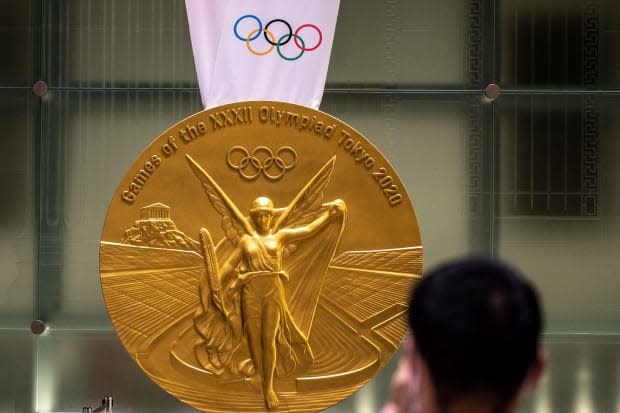Tokyo Games redefines an Olympic medal's worth through ground-breaking alchemy

Gold is the ultimate Olympic prize.
Reaching the top of the podium — earning the right to be called a champion — is something every athlete aspires to.
However, this golden moment involves very little actual gold.
In fact, there hasn't been a "real" gold medal handed out at the Olympics for over a hundred years (the 1912 Stockholm Games were the last to primarily use the element).
Beneath the shiny facade, Olympic champions and second place finishers are wearing the exact same thing — silver. As for the third place medals — yup, you guessed it, they're not really bonze; they tend to be made from a mix of copper and zinc.
If championship medals at Tokyo 2020 were to actually be made out of solid gold they would be worth in excess of $30,000 each. Instead, their value checks in at roughly $1,000.
Rio's winning legacy
However, the real alchemy behind an Olympic medal's worth has never been monetary. The notion that victory is golden is a modern conceit.
During the ancient Olympics, athletes were awarded olive wreaths. It was only after the Games were reborn in 1896 that the tradition of distributing medals to the winners began, with the practice first being implemented at the 1904 Summer Games in St. Louis.
And, while the size and shape of the medals has continued to evolve over time — as well as the imagery — the Tokyo Games are proudly extending one tradition that started in Rio 2016, where silver and bronze medals were made of 30 per cent recycled materials.
Japan's winning approach
Tokyo is taking this concept of sustainability several steps further. All of the approximate 5,000 medals to be distributed throughout the Olympic and Paralympic Games in Japan are made entirely of recycled materials.
A two-year project that involved Japanese citizens donating their used-electronic devices, over 78,985 tons of mobile phones, digital cameras, handheld games and laptops were melted down to produce every-last one of Tokyo's highly-coveted prizes.
In all, organizers estimate that over six million phones were donated.
The final product has the Tokyo 2020 emblem on one side, and Nike — the Greek goddess of victory, in front of the Panathinaikos Stadium — on the other, while the Olympic rings hang above.
The case that houses the medals is equally breathtaking. Made of Japanese ash wood, the circular lid and body can be opened to resemble a ring, thanks to its magnets.
Designer Junichi Kawanishi purposely gave the medals a polished, pebble-like appearance to signify the 'warm glow' of people holding hands.
"With their shining rings, I hope the medals will be seen as paying tribute to the athletes' efforts, reflecting their glory and symbolizing friendship," Kawanishi says.
Japan has repeatedly used recycled materials throughout the Olympics. From sustainable cardboard beds in the Athletes' Village to producing podiums — from which event winners will celebrate their triumphs — out of recycled household plastics.
Another change is that athletes, in an effort to protect against COVID-19, will be putting their own Olympic medals around their necks.
The Tokyo Summer Games will run through Aug. 8. The Paralympics will be held from Aug. 24 to Sept. 5.

 Yahoo Movies
Yahoo Movies 